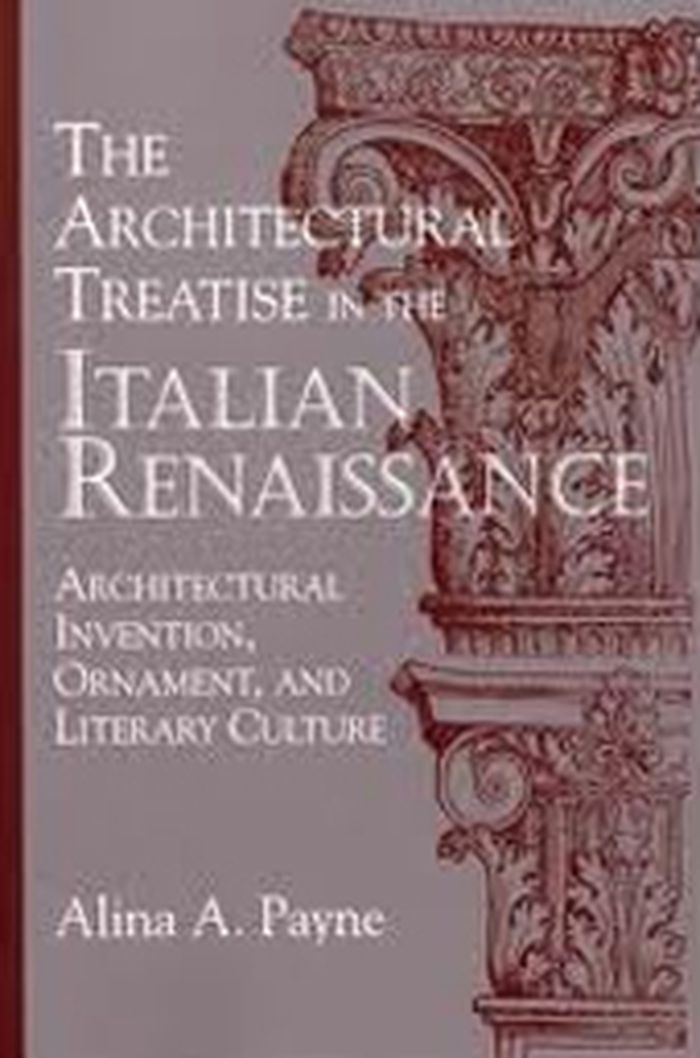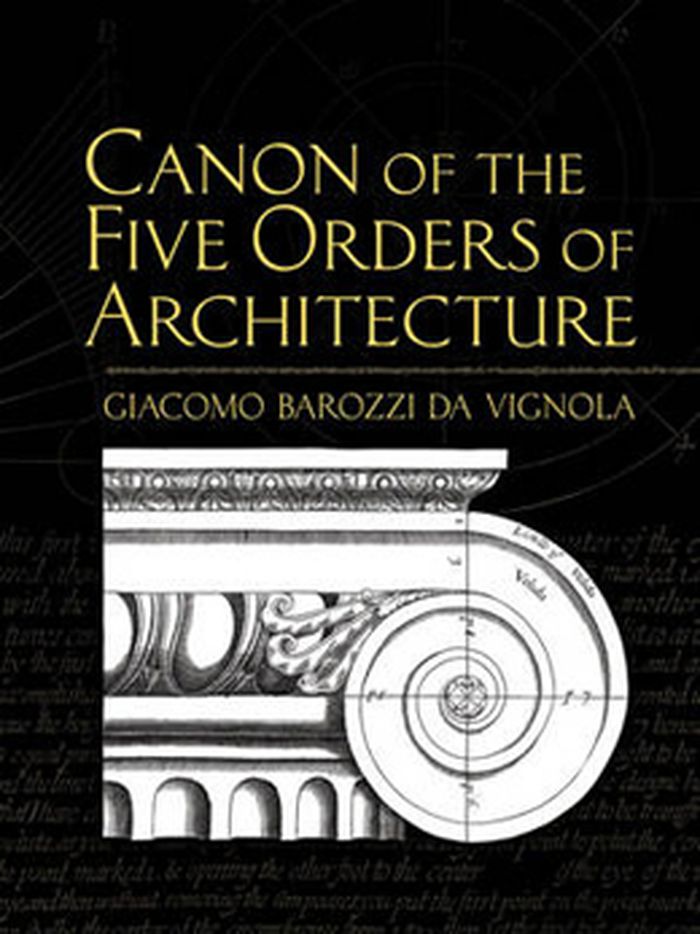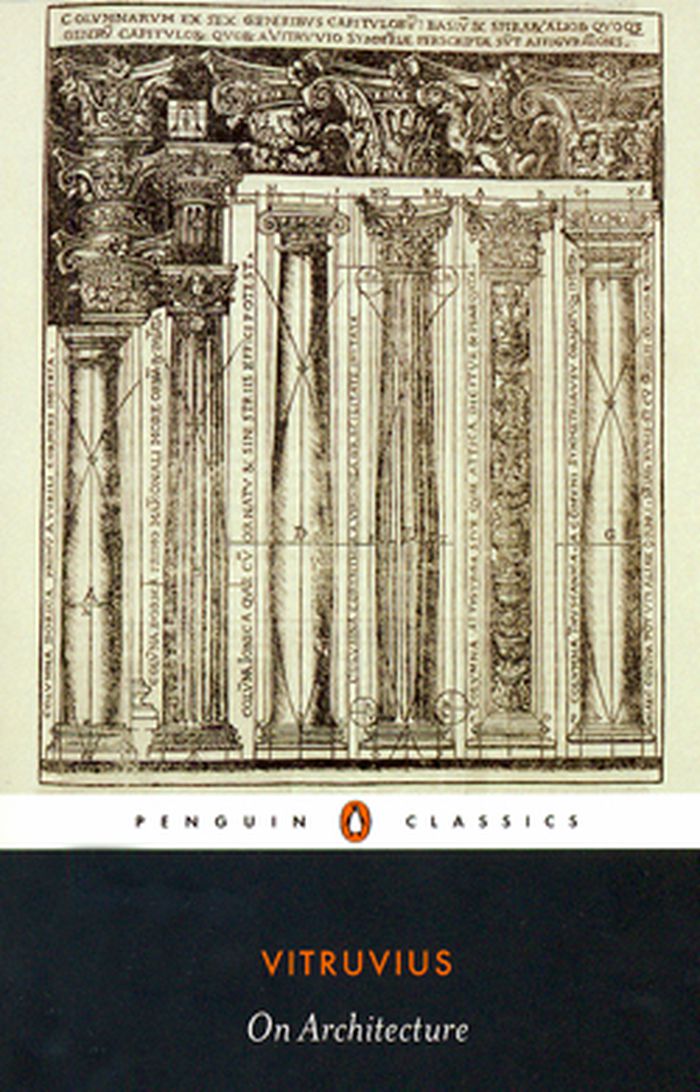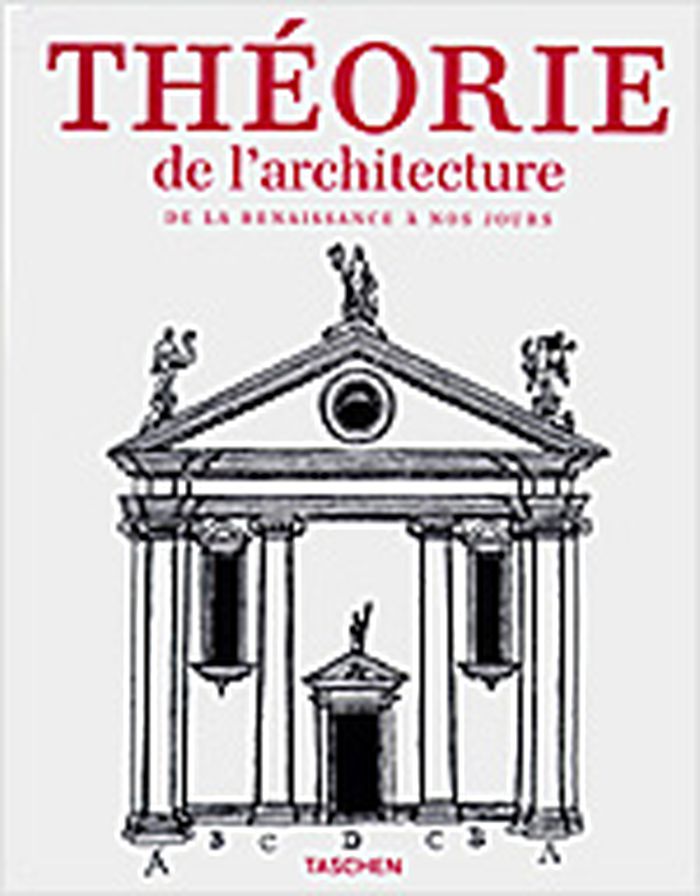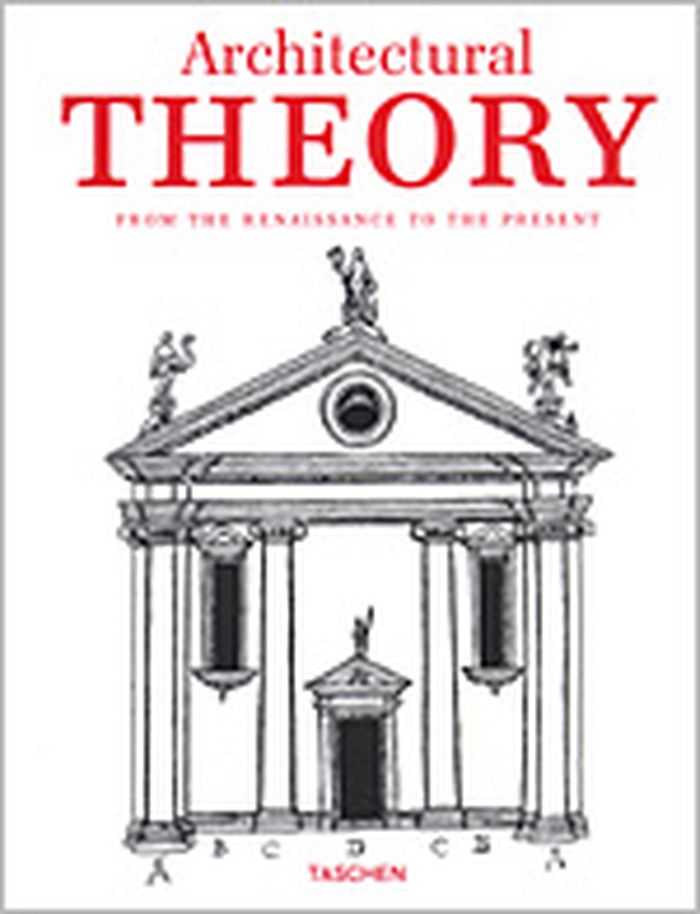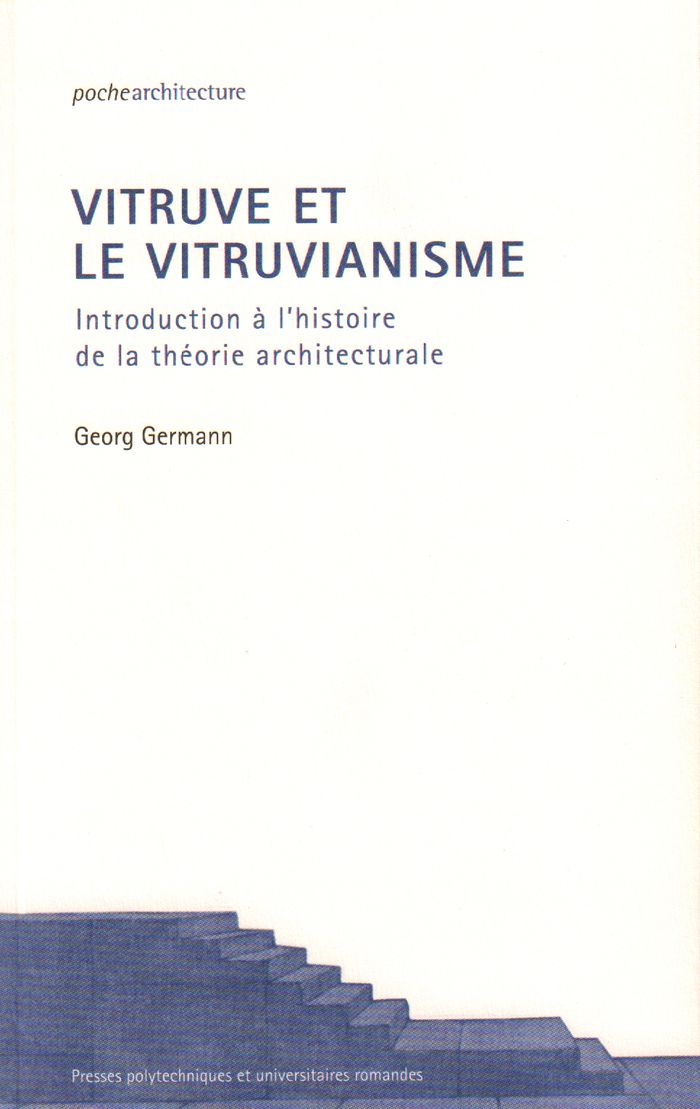$52.95
(available to order)
Summary:
Vitruvius' Ten Books of Architecture was the fountainhead of architectural theory in the Italian Renaissance. Offering theoretical and practical solutions to a wide variety of architectural issues, this treatise did not, however, address all of the questions that were of concern to early modern architects. This study examines the Italian Renaissance architect's efforts to(...)
The architectural treatise in the Italian Renaissance
Actions:
Price:
$52.95
(available to order)
Summary:
Vitruvius' Ten Books of Architecture was the fountainhead of architectural theory in the Italian Renaissance. Offering theoretical and practical solutions to a wide variety of architectural issues, this treatise did not, however, address all of the questions that were of concern to early modern architects. This study examines the Italian Renaissance architect's efforts to negotiate between imitation and reinvention of classicism. Through a close reading of Vitruvius and texts written during the period 1400-1600, Alina Payne identifies ornament as the central issue around which much of this debate focused.
Treatises
$17.50
(available to order)
Summary:
One of history's most published architectural treatises, this Renaissance volume solidified the architectural canon of the past five centuries. The distinguished architect known as Vignola identified the five orders - Tuscan, Doric, Ionic, Corinthian, and Composite - and illustrated them in full-page elevational detail. Accessible even to lay readers.
Canon of the five orders of architecture
Actions:
Price:
$17.50
(available to order)
Summary:
One of history's most published architectural treatises, this Renaissance volume solidified the architectural canon of the past five centuries. The distinguished architect known as Vignola identified the five orders - Tuscan, Doric, Ionic, Corinthian, and Composite - and illustrated them in full-page elevational detail. Accessible even to lay readers.
Treatises
Vitruvius: On architecture
$27.00
(available in store)
Summary:
The only antique treatise on architecture to have survived from Roman times; composed in ten books, On Architecture was influenced by Vitruvius's practical professional experiences and travels, as well as his admiration for Greek culture of the previous three centuries, which he regarded as the Golden Age for art and architecture. Richard Schofield's new translation.
Vitruvius: On architecture
Actions:
Price:
$27.00
(available in store)
Summary:
The only antique treatise on architecture to have survived from Roman times; composed in ten books, On Architecture was influenced by Vitruvius's practical professional experiences and travels, as well as his admiration for Greek culture of the previous three centuries, which he regarded as the Golden Age for art and architecture. Richard Schofield's new translation.
Treatises
$54.95
(available to order)
Summary:
Une histoire substantielle de la théorie architecturale, de la Renaissance à l'époque contemporaine. L'ouvrage, enrichi de plus de 850 illustrations, offre un panorama chronologique des théoriciens de l'architecture et des architectes majeurs, classés par pays, d'Alberti à Koolhaas.
Théorie de l'architecture : de la renaissance à nos jours
Actions:
Price:
$54.95
(available to order)
Summary:
Une histoire substantielle de la théorie architecturale, de la Renaissance à l'époque contemporaine. L'ouvrage, enrichi de plus de 850 illustrations, offre un panorama chronologique des théoriciens de l'architecture et des architectes majeurs, classés par pays, d'Alberti à Koolhaas.
Treatises
books
$119.00
(available to order)
Summary:
Sebastiano Serlio was the most important architectural writer and theorist of the sixteenth century. The author of the first wide-ranging illustrated book on architecture, he produced a complete set of model designs as well as practical solutions for everyday design problems. This volume, the second in a two-volume series of Serlio’s entire works, presents the previously(...)
Sebastio Serlio on architecture : volume two
Actions:
Price:
$119.00
(available to order)
Summary:
Sebastiano Serlio was the most important architectural writer and theorist of the sixteenth century. The author of the first wide-ranging illustrated book on architecture, he produced a complete set of model designs as well as practical solutions for everyday design problems. This volume, the second in a two-volume series of Serlio’s entire works, presents the previously unpublished sixth book, the seventh book, and, as well as The Extraordinary Book of Doors, his little-known Castrametation of the Romans, each of which demonstrates Serlio’s sophisticated design theories. This is the first translation of Serlio’s later works and the first time that the long lost sixth volume has been united with its companion works and restored to its intended position. The book also includes an introduction and notes by translators Vaughan Hart and Peter Hicks that demonstrate Serlio’s significance within the history of architecture and the importance of these neglected texts to our understanding of Serlio’s work.
books
June 2001, New Haven
Treatises
books
$74.95
(available to order)
Summary:
Texte établi et traduit par Louis Callebat.
Vitruve : De l'architecture, livre II
Actions:
Price:
$74.95
(available to order)
Summary:
Texte établi et traduit par Louis Callebat.
books
May 2000, Paris
Treatises
$47.95
(available to order)
Summary:
Momus is the most ambitious literary creation of Leon Battista Alberti, the famous humanist-scientist-artist and "universal man" of the Italian Renaissance. In this dark comedy, written around 1450, Alberti charts the lively fortunes of his anti-hero Momus, the unscrupulous and vitriolic god of criticism. Alberti deploys his singular erudition and wit to satirize subjects(...)
Momus
Actions:
Price:
$47.95
(available to order)
Summary:
Momus is the most ambitious literary creation of Leon Battista Alberti, the famous humanist-scientist-artist and "universal man" of the Italian Renaissance. In this dark comedy, written around 1450, Alberti charts the lively fortunes of his anti-hero Momus, the unscrupulous and vitriolic god of criticism. Alberti deploys his singular erudition and wit to satirize subjects from court life and politics to philosophy and intellectuals, from grand architectural designs to human and divine folly. The possible contemporary resonance of Alberti's satire, read variously as a humanist roman-à-clef and as a veiled mockery of the mid-Quattrocento papacy, is among its most intriguing aspects. While his more famous books on architecture, painting, and family life have long been regarded as indispensable to a study of Renaissance culture, Momus has recently attracted increasing attention from scholars as a work anticipating the realism of Machiavelli and the satiric wit of Erasmus. This edition provides a new Latin text, the first to be based on the two earliest manuscripts, both corrected by Alberti himself, and includes the first full translation into English.
Treatises
$55.95
(available to order)
Summary:
This book brings together important and influential essays about architecture written since the Renaissance, copiously illustrated and organized chronologically by country. From Alberti and Palladio to Le Corbusier and Koolhaas, some of architecture's most important treatises are gathered here, each accompanied by an essay discussing its historical context and significance.
Architectural theory from the Renaissance to the present
Actions:
Price:
$55.95
(available to order)
Summary:
This book brings together important and influential essays about architecture written since the Renaissance, copiously illustrated and organized chronologically by country. From Alberti and Palladio to Le Corbusier and Koolhaas, some of architecture's most important treatises are gathered here, each accompanied by an essay discussing its historical context and significance.
Treatises
Vitruve et le vitruvianisme
$52.00
(available to order)
Summary:
Ce livre est la traduction de la 2e édition de "Einführung in die Geschichte der Architekturtheorie" parue en 1987. En tant que discipline, la théorie de l'architecture se situe d'abord dans le champ de la littérature artistique et se manifeste par des traités autant que par des chroniques, des pamphlets, des textes romanesques, voire des utopies. La tradition(...)
Vitruve et le vitruvianisme
Actions:
Price:
$52.00
(available to order)
Summary:
Ce livre est la traduction de la 2e édition de "Einführung in die Geschichte der Architekturtheorie" parue en 1987. En tant que discipline, la théorie de l'architecture se situe d'abord dans le champ de la littérature artistique et se manifeste par des traités autant que par des chroniques, des pamphlets, des textes romanesques, voire des utopies. La tradition scientifique du traité remonte aux "Dix livres de l'architecture" de l'ingénieur-architecte Vitruve, ouvrage dédié à l'empereur Auguste. En Italie, en France, en Angleterre et en Allemagne, le discours lettré sur l'architecture répercute jusqu'au XIXe siècle l'écho du texte fondateur. D'où cette affirmation, cette amplification et ce déclin du vitruvianisme en tant que doctrine cardinale, sujette aux remises en cause de l'histoire. Partant de ce texte fondateur, le livre proposé examine le retentissement de Vitruve sur la théorie de l'architecture au Moyen Age, à la Renaissance et dans les Temps Modernes. Emanant de cours et de séminaires donnés à l'Université de Bâle, et donc destiné à l'enseignement, il propose un aperçu de l'exégèse vitruvienne et vise à mettre en place des jalons qui renvoient à la lecture des textes.
Treatises
$41.95
(available in store)
Summary:
Ce traité sanskrit d’architecture, rédigé par un auteur inconnu résidant dans l’Inde méridionale, est l’un des textes les plus complets au sujet des bâtiments et des agglomérations de l’Inde classique, notamment en pays tamoul et malayalam. Combinaison de considérations techniques, pratiques et religieuses, le « Mayamata » indique comment choisir le site d’une(...)
Traité de l'habitat : La Mayamata
Actions:
Price:
$41.95
(available in store)
Summary:
Ce traité sanskrit d’architecture, rédigé par un auteur inconnu résidant dans l’Inde méridionale, est l’un des textes les plus complets au sujet des bâtiments et des agglomérations de l’Inde classique, notamment en pays tamoul et malayalam. Combinaison de considérations techniques, pratiques et religieuses, le « Mayamata » indique comment choisir le site d’une construction suivant la classe sociale de ses futurs occupants, quel plan et quelle orientation adopter pour une maison d’habitation, un palais ou un temple garantissant le bien-être de ses résidents, quelles techniques constructives il convient d’utiliser dans chacun de ces cas. Il détaille la cérémonie à réaliser lors de la pose de la première pierre ou lors de la prise de possession du bâtiment, décrit le mobilier, le linga (représentation phallique symbolique de Siva) et la façon de figurer les dieux dans les édifices. La présente édition illustrée, aux allures de carnet d’architecte, reprend des extraits de la traduction du « Mayamata », revue pour l’occasion par Bruno Dagens, avec un appareil de notes allégé et une nouvelle introduction resituant ce traité des points de vue historique, géographie, mais aussi par rapport à l’ensemble de la tradition indienne classique d’écrits sur l’architecture et l’art d’habiter.
Treatises
